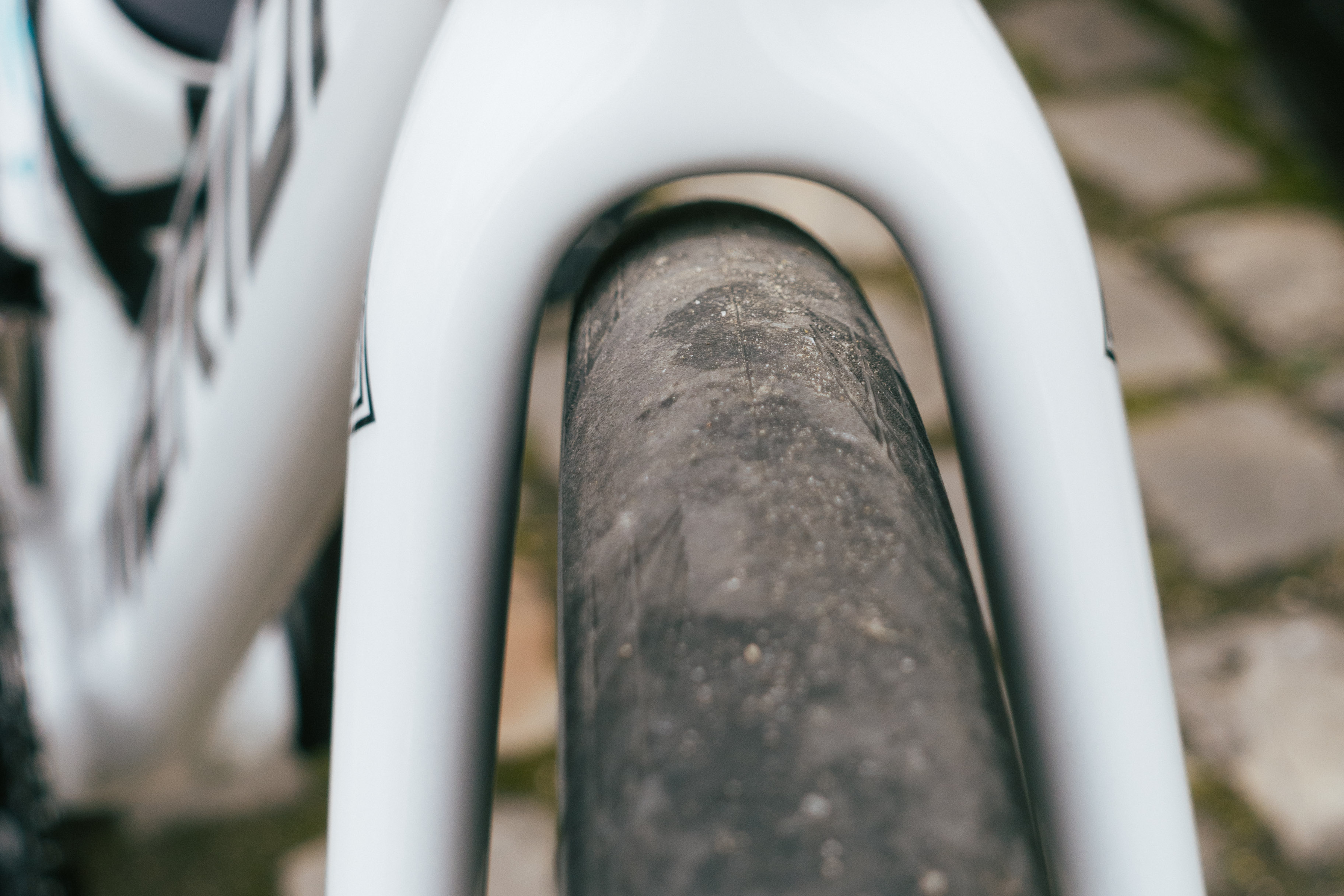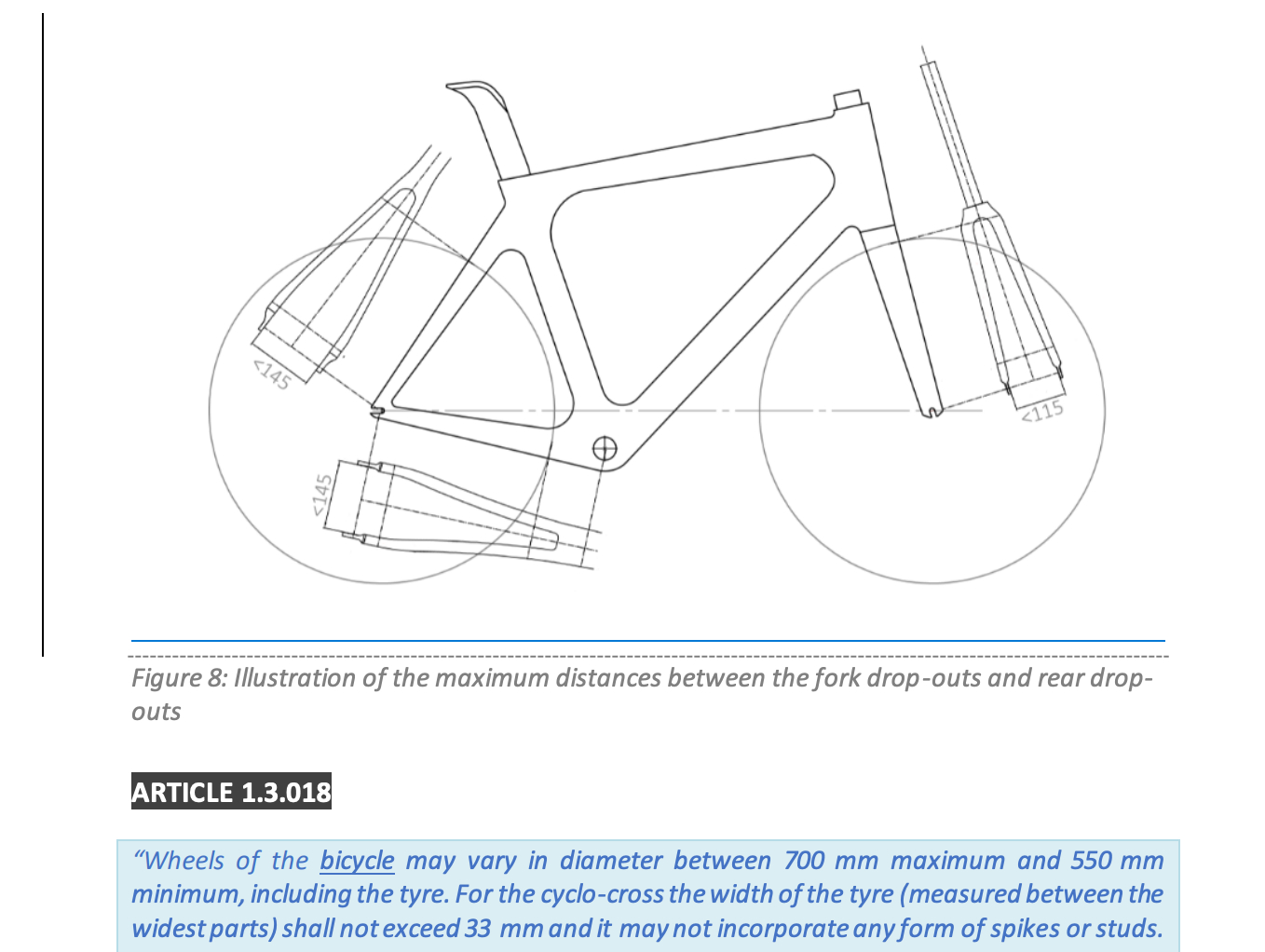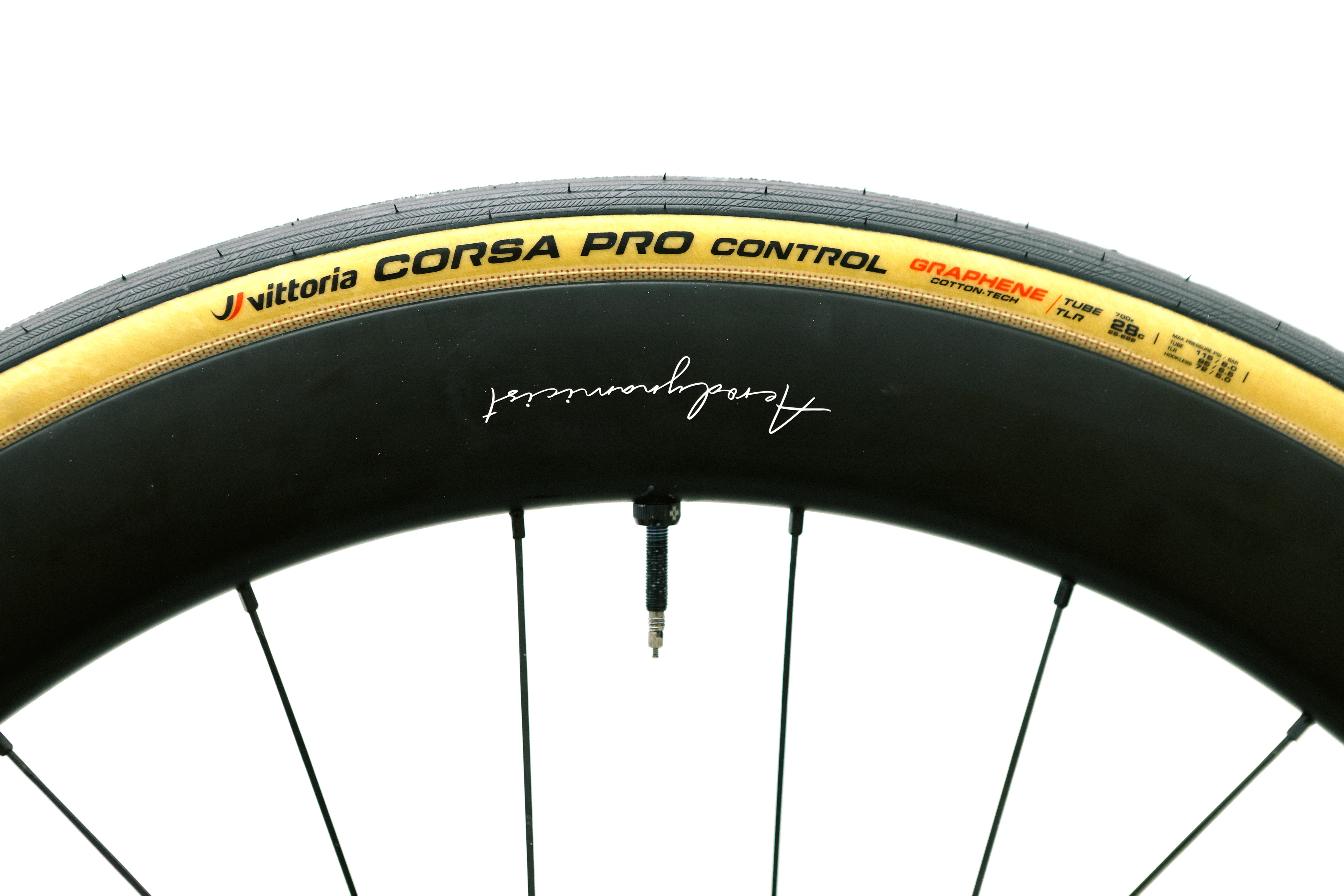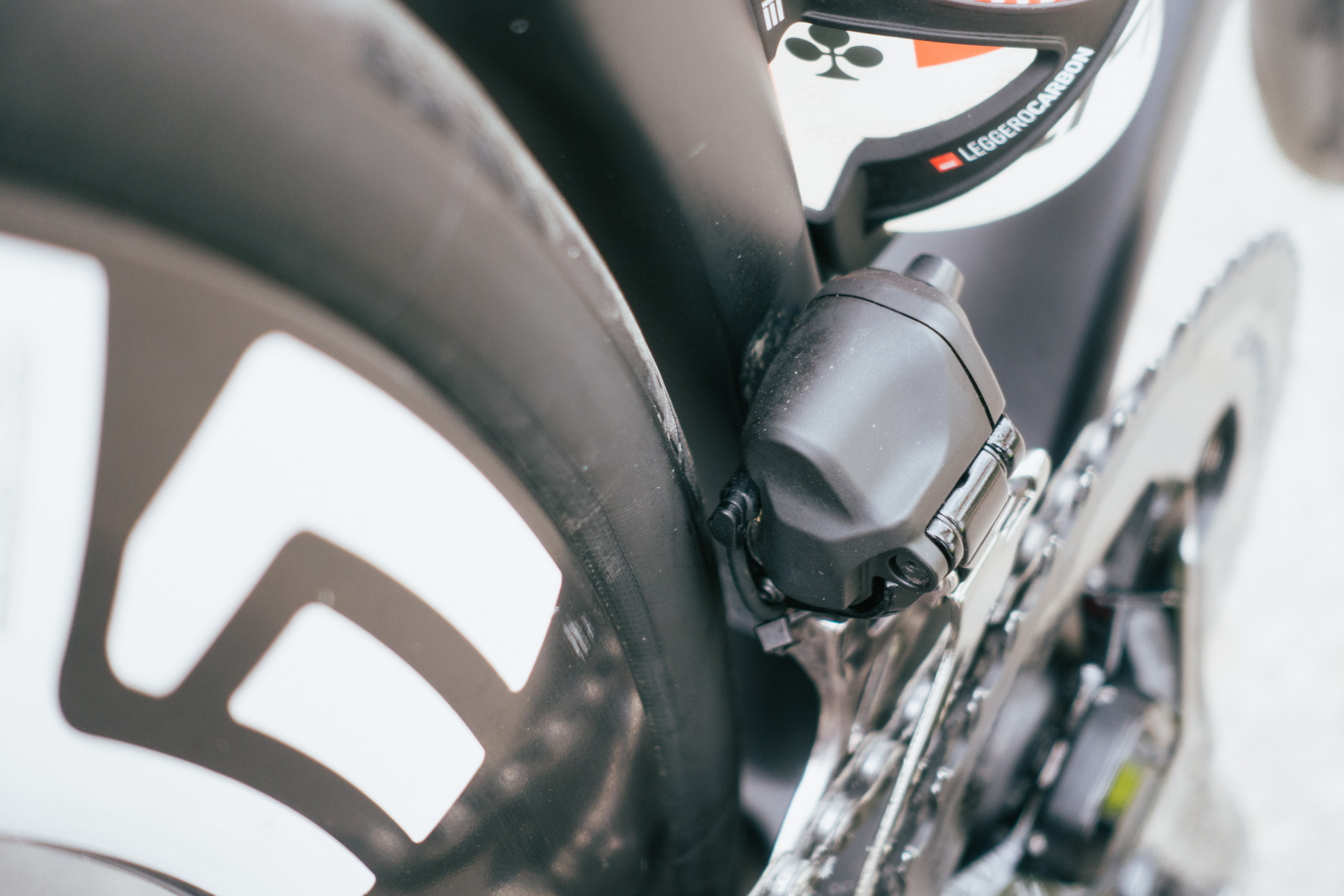What is the widest tyre we'll see at Paris-Roubaix?
32mm, 35, 40? What are the rules, the restrictions, and teams' considerations when choosing to go wider?

With Paris-Roubaix fast approaching, the one subject on everyone's lips - aside from whether Tadej Pogačar can win on his debut - is tyre width.
Over the years, road bike tyres have been getting wider and wider, and thanks to the brutal cobbled terrain along the course, Paris-Roubaix has always been the race to find the widest, as riders seek the extra cushioning and rolling resistance benefits.
Even back when 23mm was the norm for every other race day, Paris-Roubaix would see riders switch to 28mm. Nowadays, 28mm is quite normal elsewhere, and 30mm is becoming more common. But while the UCI limits cyclo-cross tyres to a maximum width of 33mm, road tyres are free to go wider. So what is the widest we will see at the Hell of the North in 2025?
Our recent lab test showed that 40mm road tyres could save riders as many as 75 watts on cobbles when compared to a 26mm equivalent, but there's a very simple reason why we won't see them at the 2025 Paris Roubaix: The UCl - cycling's governing body.
While there are no rules that explicitly specify a tyre's maximum width, there is one which limits the diameter of the wheel and tyre together, and since a wider tyre is also taller, there's a correlative limit that teams must adhere to.

Article 1.3.018 of the UCI's equipment regulations states:
"Wheels of the bicycle may vary in diameter between 700 mm maximum and 550 mm minimum, including the tyre."
Get The Leadout Newsletter
The latest race content, interviews, features, reviews and expert buying guides, direct to your inbox!
Unfortunately for anyone hoping to run a 40mm this weekend, a 40mm tyre on a standard road wheel (of 622mm diameter) has a total diameter of 701mm. This will vary somewhat from tyre to tyre, but not by much.
What is the widest tyre we'll see?
To work out the diameter of a wheel & tyre together, the formula is Diameter = rim diameter + 2 (tyre thickness).
But finding the tyre thickness isn’t as simple as finding its width. The two will be similar, since a tyre blown up will become cylindrical, but given part of that sits inside the rim bed, it’s not as simple as taking the 622mm rim and adding 2x the tyre’s width.
Luckily, the internet comes to our rescue, with a variety of resources sharing the circumference of a variety of rim/tyre combinations, and some simple maths (circumference / Pi) allows us to calculate the diameter.
The online resources tend to disagree about the millimetre-exact circumference for each rim & tyre combo, but they’re close enough that when we solve for the diameter, they result in the same conclusions. So for simplicity and ease, I will refer to Wahoo’s Wheel Circumference chart.
Here, a 700 x 38mm tyre, has a circumference of 2190mm, which equates to a diameter of 697mm.
A 700 x 40mm tyre, meanwhile, has a diameter of 701mm. Access denied.
It doesn’t list a 39mm tyre, but assuming this will sit halfway between the two, we can expect a diameter of 699mm, making 39mm the maximum allowable tyre size.
It’s worth adding that different tyres can shape differently depending on the rim width, so a 39mm tyre may sit taller on a narrower rim and fall foul to the rules. Likewise, a 40mm tyre may fall within that 700mm limit on a wider rim. Without mounting one up and measuring it, it’s hard to say for sure.

However, to my knowledge, none of the WorldTour’s tyre sponsors currently make a road tyre in 39mm. Pirelli’s P-Zero Race TLR comes in 35c and 40c, among others, so that leads us to assume its sponsored teams could use 35c, unless of course they can sneak a 40c in on a wider rim, or they instead prefer to stick with a thinner-cased P-Zero Race TLR RS tyre in a narrower size to optimise more for the road sections of the race.
Similarly, Specialized’s Mondo and Continental’s GP5000S TR also max out at 35mm, while the other common find in the WorldTour peloton, the Vittoria Corsa Pro, maxes out at 32c, but can go up to a 34c in its 'Control' variant, which is a slower tyre.
There are other considerations beyond the UCI rules, though. For Shimano-sponsored teams, who tend to run a 2x chainset, anything wider than 35mm has a risk of fouling against the inner face of the front derailleur. This is the case we saw in 2024, with Fred Wright’s tyre having little more than a couple of millimetres to spare.

The other consideration is the frame’s tyre clearance. Most aero bikes are limited to around 30 or 32mm, and while you can generally get away with squeezing in something bigger (especially if you’re a pro who doesn’t pay for the repair bill that may ensue if you push it too far), the limits are rarely beyond 35mm. To go any wider, riders would need to switch to a different frame, which would invariably add to the aerodynamic drag of the total system and offset any benefits provided from the wider tyre.
That leads us to the final consideration: Aerodynamics. Even with everything else kept the same, a wider tyre is bigger, both vertically and horizontally, and so the aerodynamic drag will also be higher. The differences are small, as outlined in our recent wind tunnel test, but they are there.
And given Paris-Roubaix is predominantly on road, anyone looking to spend any time ‘in the wind’ - be that on the front of the peloton, in a breakaway, or in a sprint to the finish line - is likely going to want to minimise this drag as much as possible.
With all that in mind, if pressed for a specific answer, the maximum tyre size I think we’ll see at Roubaix in 2025 is 35mm.
I assume the majority will stick with 32mm, like last year, but with more riders pushing to 34 or 35mm (sponsor dependent) in the search of a bit of free speed.
And if we do see wider, I’m confident we’ll see it in the women’s race, rather than the men’s. Last year we saw Kasia Niewiadoma using Schwalbe G-One Speed gravel tyres, though they were a 32c width.
Given the rolling resistance equation is linear with speed, and the aerodynamics equation is exponential, the watt penalty of an increased CdA is exponentially more severe at higher speeds, while the benefits of improved rolling resistance is not.
As teams look to balance the two, the slower speeds of the women’s peloton will mean that tipping point lands more on the side of wider tyres.

Josh is Associate Editor of Cyclingnews – leading our content on the best bikes, kit and the latest breaking tech stories from the pro peloton. He has been with us since the summer of 2019 and throughout that time he's covered everything from buyer's guides and deals to the latest tech news and reviews.
On the bike, Josh has been riding and racing for over 15 years. He started out racing cross country in his teens back when 26-inch wheels and triple chainsets were still mainstream, but he found favour in road racing in his early 20s, racing at a local and national level for Somerset-based Team Tor 2000. These days he rides indoors for convenience and fitness, and outdoors for fun on road, gravel, 'cross and cross-country bikes, the latter usually with his two dogs in tow.
You must confirm your public display name before commenting
Please logout and then login again, you will then be prompted to enter your display name.